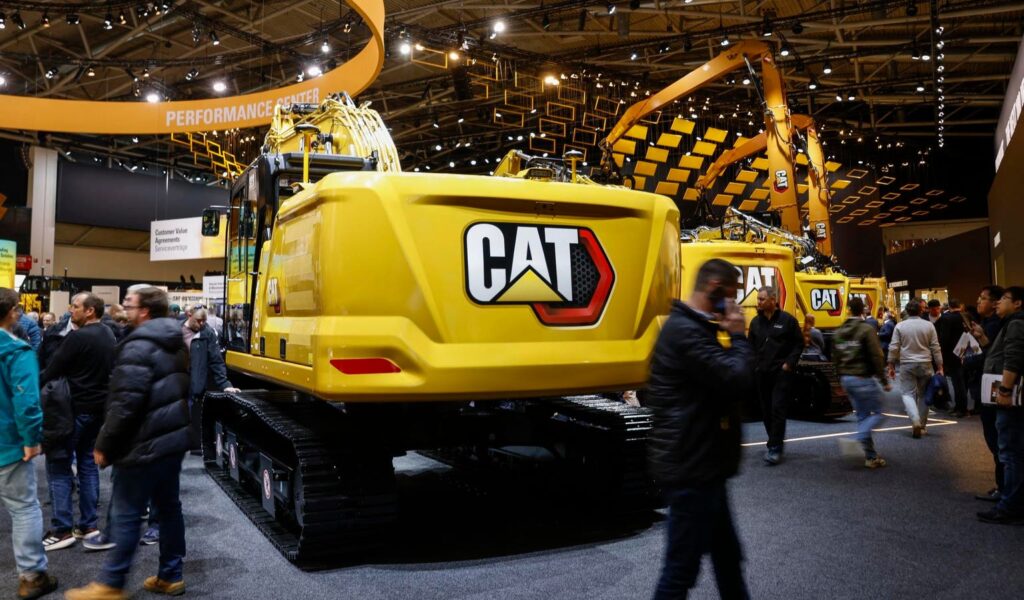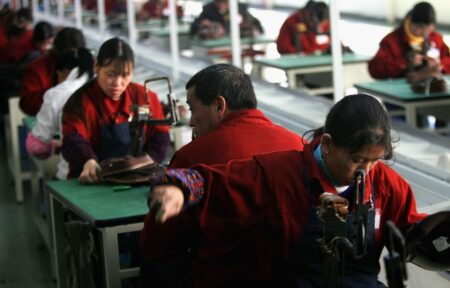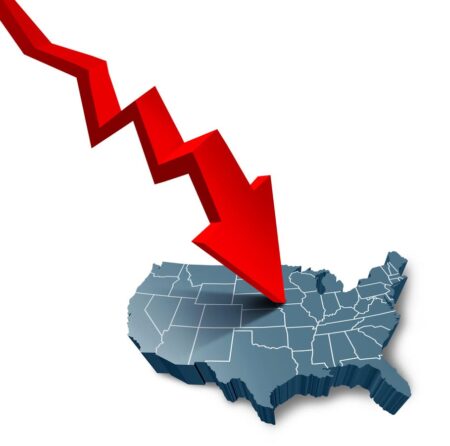Caterpillar (NYSE: CAT) recently published its Q1 results, and both revenue and earnings fell short of analysts’ forecasts. The company reported revenue of $14.2 billion and adjusted earnings of $4.25 per share, compared to the expected figures of $14.6 billion and $4.35, respectively. Decreased dealer inventory levels negatively impacted the company’s revenue. Nonetheless, the outlook for the company is more favorable than anticipated, which bodes well for its stock.
CAT stock has seen returns of -15% since the start of the year (as of April 29), lagging behind the S&P 500 index, which is down 5%. However, if you are looking for upside with more stability than a single stock, consider the High Quality portfolio, which has surpassed the S&P, achieving over 91% returns since its inception.
How Did Caterpillar Fare In Q1?
Caterpillar’s first-quarter results showed a 10% decrease in revenue year-over-year, totaling $14.2 billion. Analyzing performance across its segments, Construction Industries saw the most significant decline at 19%, followed by Resource Industries with a 10% drop, and Energy & Transportation experienced a more modest 2% decrease in revenue compared to the prior year. Our dashboard on Caterpillar’s revenue provides further details. This sales decline, combined with a 390 basis point reduction in adjusted operating margin to 18.3%, led to earnings per share of $4.25, down from $5.60 in the same quarter last year.
An important factor affecting Caterpillar’s sales was a significantly lower change in dealer inventory levels ($100 million compared to $1.4 billion in the previous year’s quarter), indicating overall weak demand. This subdued demand is attributed to the ongoing situation of high interest rates and significant inflation. Furthermore, lower price realization also contributed to the reduction in the company’s sales. Given this weak demand, Caterpillar may face difficulties in increasing prices.
Looking ahead, Caterpillar expects its second-quarter sales to be comparable to the previous year. However, the company predicts an additional cost headwind of $250 million to $350 million in Q2 due to tariffs. For the entire year, assuming no further effects from tariffs, Caterpillar estimates sales will be roughly flat compared to 2024, which is an improvement from January’s projection of a slight decline. Nevertheless, if tariffs remain at their current levels, the company still anticipates full-year sales to align with the initial January guidance.
What does this mean for CAT stock?
Although the first quarter was weaker than expected, Caterpillar’s stock rose 3% following the earnings announcement due to a positive outlook. Notably, CAT has exhibited consistent growth, increasing its value each year for the past four years. Specifically, the stock delivered returns of 16% in 2021, 19% in 2022, 26% in 2023, and 25% in 2024. However, this consistent appreciation has not led to consistent market outperformance.
In contrast, the Trefis High Quality (HQ) Portfolio, which comprises 30 stocks, is less volatile. It has comfortably outperformed the S&P 500 over the last four years. Why is that? As a collective, HQ Portfolio stocks have provided better returns with reduced risk compared to the benchmark index; resulting in a less tumultuous experience, as illustrated in HQ Portfolio performance metrics.
Considering the current uncertain macroeconomic situation, particularly concerning tariffs and trade conflicts, the question emerges as to whether CAT might experience a comparable period of underperformance compared to the S&P 500 over the next 12 months, similar to 2021. Alternatively, might the stock see significant upward movement?
While we are in the process of updating our valuation model for CAT to reflect the latest results, our current evaluation indicates potential for growth. Currently trading at approximately $315, CAT’s stock has a price-to-earnings (P/E) ratio of 15x, based on trailing earnings of $20.55 per share. This is lower than its average P/E ratio of 19x over the past five years. Although a slight contraction in the valuation multiple seems reasonable given the recent decrease in sales and profits, we believe that with a 15x earnings multiple, CAT stock may still have some room for appreciation.
While CAT stock appears to have potential for growth, it is beneficial to evaluate how Caterpillar’s Peers perform on important metrics. You can find additional valuable comparisons for companies across various industries at Peer Comparisons.
Read the full article here
















